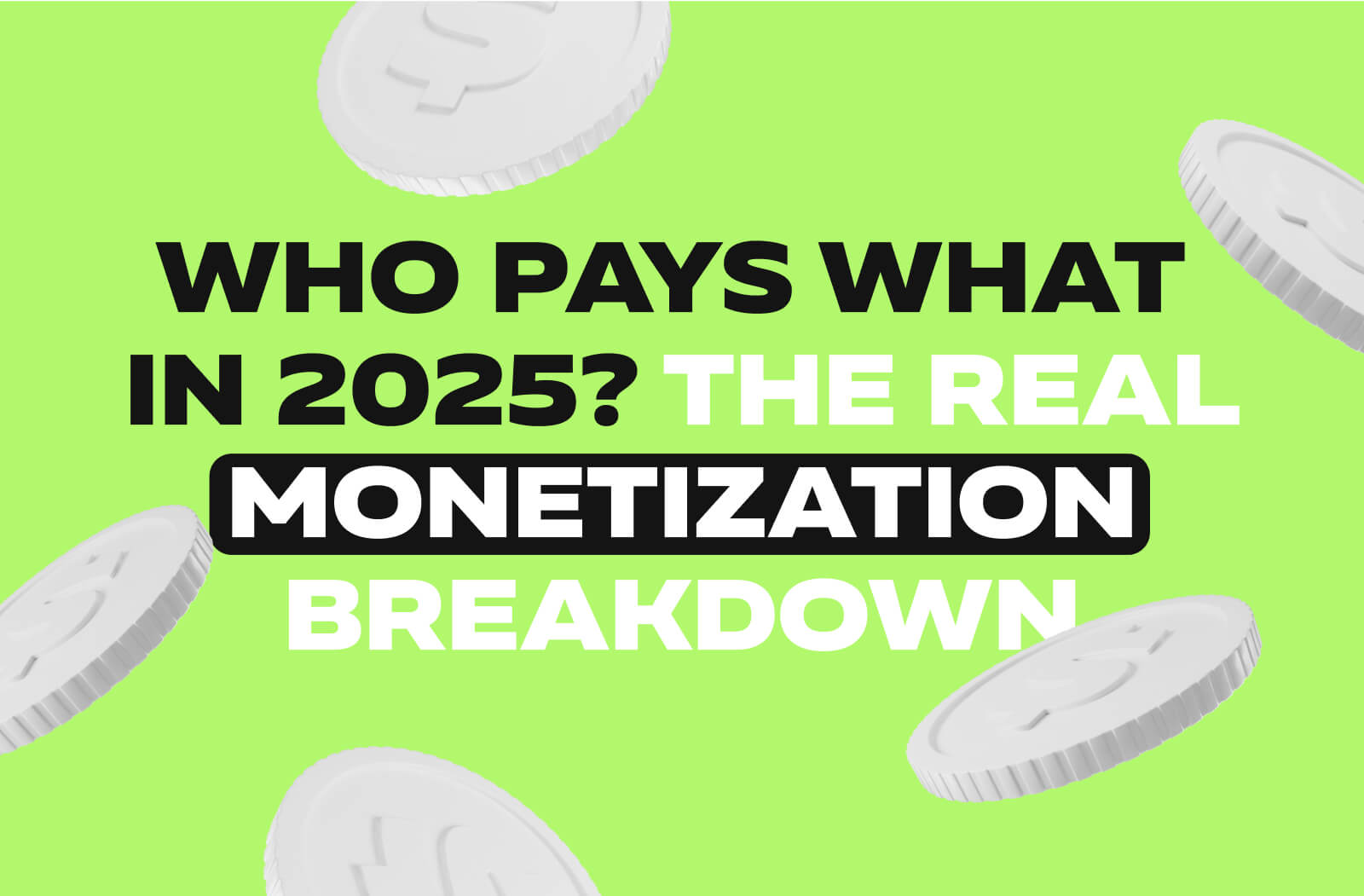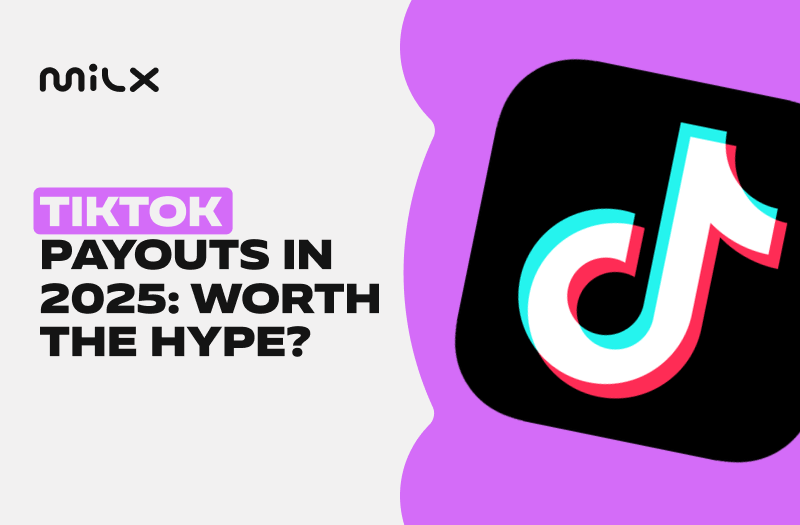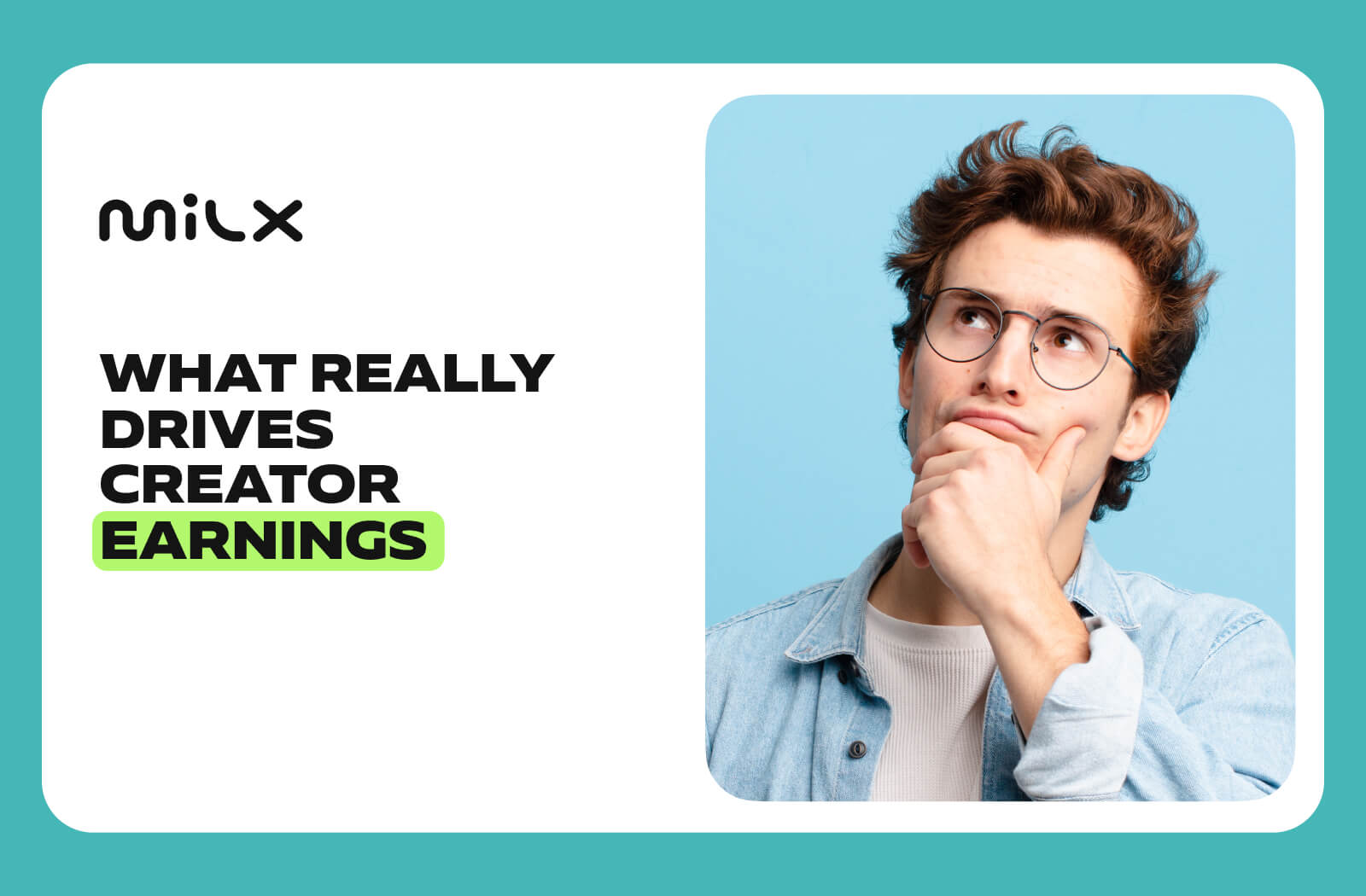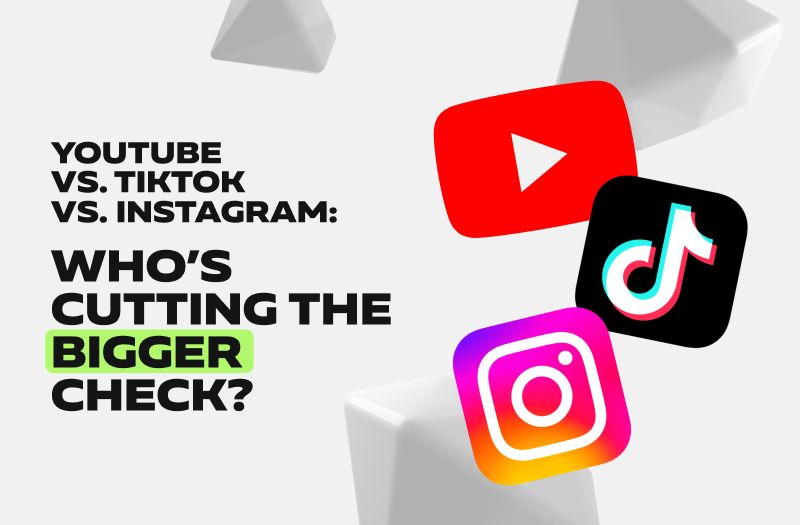Where’s the real money in 2025? YouTube, TikTok, or Instagram? YouTube promises stability, TikTok fuels virality, and Instagram banks on your brand power. So where should you post if you want to get paid more, not just seen?
We’ve crunched the numbers, and analyzed data from 3,000+ MilX creators. Let’s see which platform pays the most in 2025 and why.
Monetization Models on YouTube, TikTok, and Instagram
According to Epidemic Sound’s data Nearly 50% of monetizing creators clock over 20 hours a week crafting content, showing just how much hustle goes into keeping audiences hooked. Around 39% have been at it for 2–5 years, proving that success is a long game, not an overnight win. A
YouTube remains the gold standard for creator monetization. Creators earn from ads, memberships, Super Chats, YouTube Premium, and Content ID. It’s not just pocket change either.
TikTok is built for virality, but not always for revenue. It’s experimenting with new models like the Creator Rewards Program for videos over 1 minute, plus live gifting and tips.
But only a small percentage of creators see consistent returns.
Instagram? It’s pay-to-play. As Meta scales back its Reels Play bonuses, more creators are turning to affiliate marketing, brand partnerships, and UGC deals.
Nearly 40% of Instagram creators depend entirely on sponsored content to monetize. If you don’t know how to sell to brands, getting paid is tough. But a free pin.top tool can help with that.

How Much Does YouTube Pay in 2025?
YouTube is still where the real money is.
YouTube creators earn more on average than those on TikTok or Instagram. And MilX’s 2025 data backs it up, creators who consistently publish long-form content are pulling in serious revenue.
So, what can you expect?
- Average RPM (Revenue per 1,000 views): $1 to $5;
- Top niches (finance, productivity, tech): Up to $10+ RPM;
- Shorts RPM: Still low, often around $0.04–$0.30 in low-CPM regions.
What makes YouTube unique is the stacked income: ads, YouTube Premium, channel memberships, Super Chats, and Content ID can all generate money, even from the same video.
A single 10-minute video with 1M views in a strong niche like personal finance can make $2,000–$7,000, depending on location and engagement. Add in a few loyal members and Premium watch time? That number climbs higher.
And don’t overlook Content ID. MilX creators who upload music or licensed footage often earn passively from thousands of reuploads, monetizing content they didn’t even publish themselves.
Unlock YouTube Earnings with MilX
MilX is a flexible finance app made for YouTube creators.
MilX gives you full control:
- Get paid daily;
- Unlock up to 6 months of revenue upfront;
- Move money instantly across 40+ currencies, including crypto.
No delays. No limits. Just fast, flexible access to your YouTube income.
Fuel your next move with MilX, built for creators who move fast.
Get Paid Upfront for YouTube Views
MilX lets you cash out anytime, unlock future earnings upfront, and move money instantly, even in crypto. No delays, no limits. Start free and own your creative income. It’s time to try free MilX app.
How Much Does TikTok Pay in 2025?
Creators have more ways to make money on TikTok in 2025.
TikTok's primary monetization initiative, the Creator Rewards Program, compensates creators based on the performance of their content.
How much TikTok pays creators? Eligible creators can earn between $0.40 to $1.00 per 1,000 views, depending on video length, originality, audience engagement, and viewer location.
For instance, a video garnering 1 million views could yield earnings ranging from $400 to $1,000.
TikTok alternative revenue streams:
Beyond the Creator Rewards Program, TikTok offers other monetization options:
- TikTok LIVE gifts: During live streams, viewers can send virtual gifts to creators. These gifts are converted into Diamonds, which can be exchanged for real currency. Thus 10,000 Coins received valued at ~$100.
- Brand partnerships and affiliate marketing: Many creators supplement their income through brand deals and affiliate marketing, promoting products or services to their audience.
- eCommerce integration. In addition TikTok has a specialized eCommerce platform - TikTok Shop. Creators can use it as an additional channel to sell their stuff.

How Much Does Instagram Pay in 2025?
Instagram’s monetization works a bit differently that YouTube’s and TikTok’s in 2025.
Let’s break down the instagram influencer income. Instead of direct payouts for views, Instagram's earnings are primarily driven by brand partnerships, affiliate marketing, subscriptions, and product sales.
Sponsored posts and instagram brand deals are a significant income source. Influencers with 500,000 or more followers can command between $3,000 and $10,000 per sponsored post, depending on engagement and niche.
For instance, mega-influencer Alix Earle reportedly earns $450,000 for a single sponsored Instagram Story .
Instagram's subscription feature allows creators to offer exclusive content to followers for a monthly fee. With subscription prices ranging from $0.99 to $99.99, creators can generate substantial income.
For example, if 2% of a creator's 1 million followers subscribe at $4.99/month, it could yield nearly $100,000 monthly before platform fees.
Affiliate marketing and selling digital products are additional revenue streams. Earnings from affiliate marketing vary based on the products promoted and audience engagement, with potential monthly earnings ranging from $500 to $10,000 for creators with 1 million followers.
Selling digital products, like templates or courses, can also be lucrative; for instance, one of MilX’s creators made $16,452 in a single month on their course.

Key Factors Affecting Creator Payouts on Each Platform
What you earn as a creator in 2025 depends on more than just follower count or video length. Here’s what really drives payouts across YouTube, TikTok, and Instagram:
Audience Location
Brands pay more to reach viewers in the U.S., UK, Canada, and Germany. That’s why creators with global audiences but low-CPM regions (like India or Southeast Asia) often see lower RPMs.
A creator with mostly U.S. views on YouTube can earn $5–$10 RPM. The same video with an Indian audience might bring in $0.30.
Content Format
Long-form videos typically bring higher payouts due to better ad placement and engagement. YouTube rewards retention. TikTok and Instagram favor short-form, which pays less, unless it’s sponsored.
Niche
Finance, tech, education, and productivity content attracts higher-paying ads and brands. General entertainment and lifestyle content usually pays less unless you have massive reach.
Platform Tools Used
YouTube has built-in monetization layers: ads, memberships, Content ID, etc. TikTok relies more on virality + external brand deals. Instagram favors those who master affiliate marketing and sponsored content.
Engagement Over Reach
Brands now look at clicks, saves, and watch time, not just likes or follower count. A smaller creator with deep engagement often earns more than someone with 10x the followers but weak interaction.
Consistency and Volume
Algorithms reward consistency. Regular posting increases visibility, which increases income potential, especially on platforms like TikTok and Instagram, where short-form burnout is real.
In short: who watches, what you post, and how you monetize it matters more than ever.

Power Up with MilX Active Funds
Access up to 6 months of future YouTube revenue today, no waiting, no slowdown. Start free with MilX and keep your growth moving.
Key Takeaways: Where Should You Focus in 2025?
If you are choosing only one platform, it's a risk. Diversify and get different income streams flowing in.
YouTube still leads the pack. It offers stable, scalable income through multiple monetization layers. If you’re building long-form content, educating your audience, or tapping into niches like finance or tech, this is your home base.
On top of that, it's easy to get paid on YouTube with a free MilX app and even receive extra cash for growth.
TikTok brings fast reach and virality, but revenue is inconsistent. You’ll need brand deals or a strong live-streaming strategy to turn views into cash.
Instagram rewards strong personal branding. Monetization here leans heavily on sponsorships, affiliate sales, and paid communities. If you have a loyal niche and know how to sell, the platform can pay off.

